Seville (Spain Andalusia)
Cruise Port schedule, live map, terminals, news
Region
Europe Rivers
Local Time
2025-04-24 15:17
 80°F
80°F 26.9°C

 Light breeze
Light breeze2.5 m/s
 84 °F / 29 °C
84 °F / 29 °C 55 °F / 13 °C
Port Seville cruise ship schedule shows timetable calendars of all arrival and departure dates by month. The port's schedule lists all ships (in links) with cruises going to or leaving from Seville, Spain Andalusia. To see the full itineraries (ports of call dates and arrival / departure times) and their lowest rates – just follow the corresponding ship-link.
| Day | Ship | Arrival | Departure |
|---|---|---|---|
| 1 April, 2025 Tuesday | 03 Apr, 09:00 | ||
| 7 April, 2025 Monday | 18:00 | 09 Apr, 17:00 | |
| 10 April, 2025 Thursday | 18:00 | 12 Apr, 13:00 | |
| 13 April, 2025 Sunday | 20:00 | 15 Apr, 20:00 | |
| 15 April, 2025 Tuesday | 17 Apr, 09:00 | ||
| 18 April, 2025 Friday | 11:00 | 19 Apr, 10:00 | |
| 20 April, 2025 Sunday | |||
| 21 April, 2025 Monday | 10:00 | ||
| 22 April, 2025 Tuesday | 10:00 | 23 Apr, 17:00 | |
| 24 April, 2025 Thursday | 18:00 | 26 Apr, 13:00 | |
| 25 April, 2025 Friday | 21:00 | 27 Apr, 17:00 | |
| 27 April, 2025 Sunday | 08:00 | 28 Apr, 18:00 | |
| 29 April, 2025 Tuesday | 01 May, 09:00 |
Seville (Sevilla) is Spain's only river port (locode ESSVQ), as well as the capital and largest city of Andalusia (Spanish autonomous territory). The city is located on River Guadalquivir and has population around 700,000 (metro around 1,5 million), ranking it Spain's 4th-largest - after Madrid, Barcelona, and Valencia.
After the 17th century, the city started a gradual economic decline as the river traffic was relocated to the nearby seaport Cadiz (the principal cruise port to Sevilla).
All large cruise liners to Sevilla dock at Port Cadiz (approx 130 km / 80 mi to the south) and their passengers are transported to the city via chartered tour busses. However, smaller-sized ships and superyachts can navigate up Guadalquivir River to dock at Seville Harbor, which is approx 80 km (50 mi) away from the river's mouth.
Seville Harbour (via Guadalquivir) offers access to the Mediterranean Sea and the Atlantic Ocean (via Gibraltar UK). Port Seville underwent a major reorganization, resulting in annual cargo volume increase of 5,3+ million tons.
Sevilla's Old Town area is sized 4 km2 (2 mi2) and houses 3x UNESCO sites - Archivo General de Indias (16th-century merchants' exchange), Reales Alcazares de Sevilla (13th-century royal palace complex/aka al-Qasr al-Muriq/The Verdant Palace) and Seville Cathedral (Catedral de Santa Maria de la Sede/16th-century).
The town (as Hispalis) was established by the Romans and, following the Muslim conquest (8th-century) was renamed Ishbiliya. During Muslim Spain (aka Islamic Iberia, when the country was known as Al-Andalus) it was the second-largest city (after the capital Cordoba) of the Caliphate of Cordoba (929-1031 AD).
In 1248, Sevilla became part of Reino de Castilla/Kingdom of Castile (1065-1833) under King Ferdinand III (1201-1252). Seville became one of the Spanish Empire's biggest economic hubs after the Americas were discovered, as the river port was enlarged and used for Transatlantic trade. In 1519, Ferdinand Magellan (1480-1521) departed from Sevilla on the first world circumnavigation voyage.
- Accidents
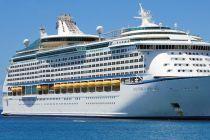
Flooding in Spain delays Royal Caribbean's ship Adventure OTS Transatlantic cruise by 2 days
Adventure of the Seas, currently undergoing scheduled maintenance in Cadiz (Spain) has faced delays due to the region's severe rain and flooding...
November 17, 2024 - Cruise Industry
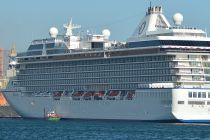
Oceania unveils 2025 Specialty Cruises featuring culinary legends
Oceania Cruises has unveiled its 2025 Specialty Cruises, offering an immersive blend of culinary excellence and cultural experiences at sea. These...
September 29, 2024 - Cruise Industry
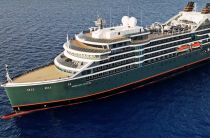
Seabourn unveils exclusive The Collection cruises with shoreside experiences
The ultra-premium travel brand Seabourn is introducing "The Collection," a series of meticulously crafted voyages also offering unparalleled...
April 7, 2024 - Cruise Industry

Ponant and Smithsonian Journeys unveil 2025 cruise itineraries
Ponant, the French cruise line, and Smithsonian Journeys, the travel arm of America's Smithsonian Institution, have revealed their captivating new...
March 4, 2024 - Cruise Industry
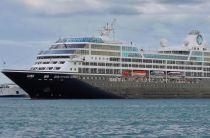
Azamara Cruises announces 4 new culturally immersive voyages
The ultra-premium company Azamara introduced 4 new voyages, each designed to provide guests with immersive cultural experiences that delve...
September 24, 2023 - Cruise Industry
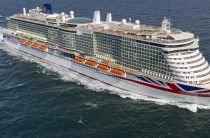
P&O announces 3 new Wellbeing & Lifestyle cruises
P&O Cruises has unveiled 3 new Wellbeing and Lifestyle cruises, featuring TV presenter and women's health advocate Cherry Healey, and stylist Kat...
August 6, 2023 - Cruise Industry

Azamara Cruises returns to Canada in 2025 and debuts double-night port stays
Azamara Cruises will return to Canada in 2025 after a hiatus since 2017 and introduce special 2-night stays in select European ports. Azamara's 2025...
July 17, 2023 - Cruise Industry
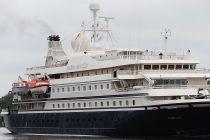
SeaDream Cruises launches 2025 Caribbean, Mediterranean, Scandinavia/Northern Europe itineraries
SeaDream Yacht Club announced the opening of 2025 Caribbean, Mediterranean, Scandinavia & Northern Europe cruises on its newly renovated, 56...
January 23, 2023 - Cruise Industry
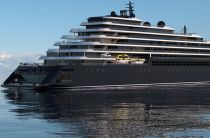
Ritz-Carlton unveils 2024 Mediterranean cruise itineraries for Evrima ship
The Ritz-Carlton Yacht Collection unveiled 2024 Mediterranean itineraries for the Evrima ship. With total 21 voyages, the extended...
July 19, 2022 - Cruise Industry

Lindblad unveils 2 new cruise itineraries for Sea Cloud sailship
Lindblad Expeditions announced 2 new itineraries for the 58-passenger sailship Sea Cloud. On the new voyages, tourists will discover the Adriatic...
July 12, 2022 - show more news
